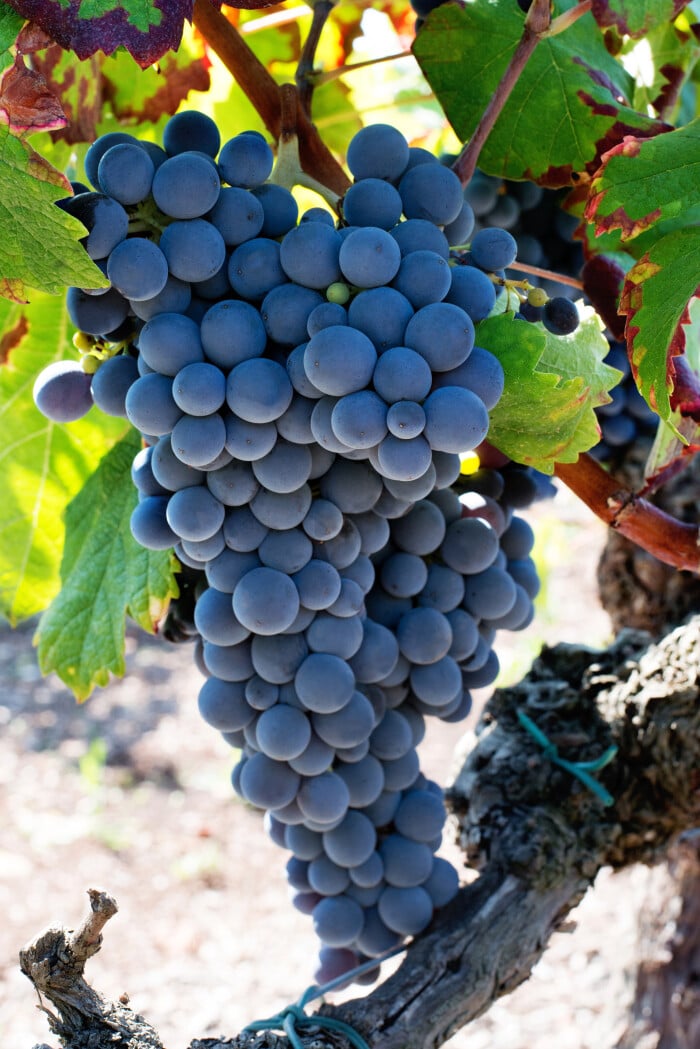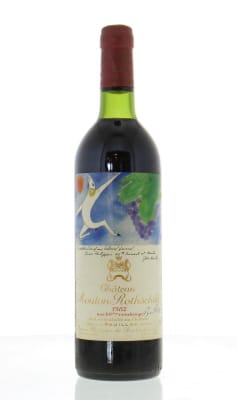
Cabernet Sauvignon
The grape for iconic wines and the best known and most accepted grape variety, both in taste and for cultivation. Cabernet Sauvignon gives its typical aromas, power and colour. The wines made from the Cabernet Sauvignon can have strong tannins and good maturation possibilities.
The wines are extremely suitable for maturation on wooden barrels, usually offering a hint of vanilla from the oak wood. In addition the Cabernet Sauvignon is a grape that blends very well with other grapes, oftenly creating beautiful combinations.
Cabernet Sauvignon is not only a superstar in Bordeaux and California. Some of the most expensive wines in the world are made from Cabernet Sauvignon. At the same time, the grape is also the most widely grown grape variety in the world.
Where does the Cabernet Sauvignon grape variety come from?
It is at home where the most famous and most expensive wines in the world are produced: Bordeaux. It has been proven that Cabernet Sauvignon originated in this prestigious French region in the 17th century. It was a natural cross between Cabernet Franc and Sauvignon Blanc. Yes, exactly. A white grape is one of the parents! Amazing! While Cabernet Sauvignon takes on characteristics such as structure and complexity from Cabernet Franc, Sauvignon Blanc contributes freshness and aroma. So both parents only passed on the best to the offspring.
In Bordeaux, Cabernet Sauvignon quickly became the main grape variety for the region's famous cuvées, particularly in the Médoc and Haut-Médoc. Here it is often blended with Merlot and Cabernet Franc. On the Left Bank in particular, the Bordeaux blends are dominated by Cabernet Sauvignon.
Cabernet Sauvignon worldwide
In the 18th and 19th centuries, Cabernet Sauvignon spread beyond the borders of France for the first time. The red grape was first cultivated in neighbouring Italy and Spain. In the middle of the 18th century, Spanish missionaries then took the grape variety with them to the USA. However, the actual cultivation boom did not follow until the middle of the 20th century. On the one hand, Cabernet Sauvignon caused a sensation in Tuscany, where it has since played an important role in many of the so-called ‘Supertuscans’. On the other hand, Californian winemakers realised that the grape could reach top form in the Napa Valley and Sonoma Valley in particular, thanks to the warmth and many hours of sunshine there.
The final breakthrough in popularity came in 1976 with the famous ‘Judgment of Paris’, in which California Cabernet Sauvignons (Napa Valley) completely outperformed top French wines in a blind tasting. This catapulted California Cabernet Sauvignons into the top echelon of the wine world virtually overnight. Today, Cabernet Sauvignon accounts for about 25% of all red vines in California, making it one of the most important varieties in the country. In addition to California, other US states such as Washington and Oregon have also begun to produce high-quality wines from this grape variety. Worldwide, 310,000 hectares are planted with Cabernet Sauvignon. This makes the grape variety the undisputed leader among the most widely grown grapes.
What does Cabernet Sauvignon taste like?
Cabernet Sauvignon wines are known for their deep red colour and complex aroma profile. When young, the dark fruity notes of blackcurrant (cassis), black cherry and blackberry are particularly prominent. Depending on the type of wood and the size of the cask used to age the Cabernet Sauvignon, spicy nuances such as cedar wood, black pepper, tobacco, vanilla (ageing in French oak) or coconut (ageing in American oak) may also be added. Fresh accents such as mint or eucalyptus often depend on the type of soil in which the Cabernet Sauvignon vines thrive.
Thanks to their excellent and very present tannin structure, Cabernet Sauvignon plants can be stored and aged for a small eternity. Ten, 15, 20 or more years are often no problem. When aged, additional hints of leather or truffles develop, while the fruity components fade into the background. Whether young or aged, the recommended drinking temperature is 16 to 18 degrees Celsius.
What are the ideal growing conditions for Cabernet Sauvignon?
Due to the thicker skin of its berries, Cabernet Sauvignon thrives best in warm climates. The grapes need sun and warmth to ripen reliably – otherwise, too many green notes will disturb the aroma. In addition, well-drained soils such as gravel are very important. If the moisture accumulates in the soil, as is the case with clay or loess, for example, Cabernet Sauvignon tends to grow too much foliage. This can lead to a loss of quality. On the other hand, the grape variety then also tends to suffer from downy mildew. These two drawbacks ensure that Cabernet Sauvignon truly cannot thrive everywhere.
Which growing regions are known for Cabernet Sauvignon?
There is hardly a wine-growing country without Cabernet Sauvignon. But where are the best wines made from this grape variety? Let's take a closer look at the best growing regions for Cabernet Sauvignon.
- Bordeaux, France. Bordeaux is not only the birthplace of Cabernet Sauvignon, but also one of the most important growing areas for the grape variety. In the Médoc and Pessac-Léognan in particular, Cabernet Sauvignon plays a central role in the famous Bordeaux blends, often combined with Merlot and Cabernet Franc.
- Napa Valley, California, USA. Napa Valley is known for its powerful, pure Cabernet Sauvignon wines. The warm climate and diverse soils of the region produce wines with intense fruit and a long shelf life.
- Coonawarra, Australia. This region in South Australia is characterised by its terra rossa soil, which gives Cabernet Sauvignon wines a distinctive elegance and structure.
- Maipo Valley, Chile. Chile is one of the leading countries for Cabernet Sauvignon. The Maipo Valley in particular produces wines with ripe fruit flavours and firm tannins. With around 40,000 hectares, Cabernet Sauvignon is the most widely grown grape variety.
- Stellenbosch, South Africa. Cabernet Sauvignon is also the most commonly grown red wine grape variety in South Africa. The Stellenbosch region is known for its complex and spicy wines.
- Tuscany, Italy. In Tuscany, Cabernet Sauvignon is often used in the famous ‘Supertoscaners’, where it is blended with Sangiovese or other Bordeaux grape varieties.
Which Cabernet Sauvignon wines are famous?
What food goes well with Cabernet Sauvignon?
Meat lovers are particularly recommended to choose Cabernet Sauvignon as a wine to accompany their meal. Due to its tannin structure and black fruit notes, Cabernet Sauvignon goes particularly well with pan-fried or grilled red meat such as steak or lamb. But vegetarians and vegans also get their money's worth with Cabernet Sauvignon. Namely with grilled vegetables in all variations. The roasted aromas that arise perfectly complement the spicy notes of the wine.
But opposites also attract, as we all know. That's why we also recommend hard cheeses such as Cheddar or Parmesan with Cabernet Sauvignon, because their umami contrasts the tannin very skilfully, creating an amazingly pleasant tension in the mouth. In general, the following applies to a Cabernet Sauvignon: the wine's strong structure makes it ideal for dishes with a high fat content or intense spices.
Three fun facts about Cabernet Sauvignon
- At the famous Judgment of Paris in 1976, the 1973 Cabernet Sauvignon from California's Stag's Leap Wine Cellars took first place. In the blind tasting, the wine beat out Bordeaux greats like Château Mouton Rothschild.
- Château Latour was also beaten during a tasting by a Cabernet Sauvignon from another country. At the ‘International Wine Olympics’ in 1979, organised by the gourmet magazine Gault-Millau, also in Paris. First place went to Gran Coronas Etiqueta Negra 1970 from Miguel Torres in Spain.
- It was only in 1997 that DNA tests confirmed that Cabernet Sauvignon is actually a hybrid.






